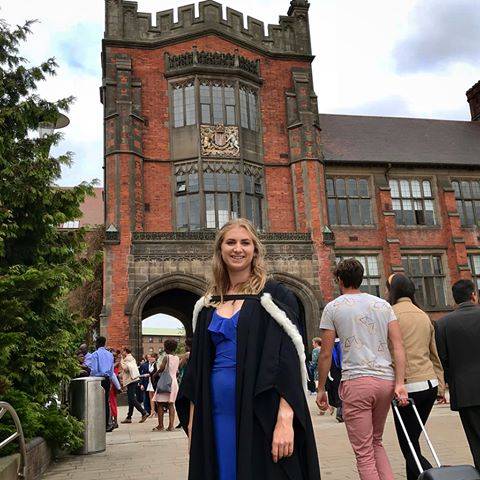沟通之前:希望您能花,三到五分钟的时间,观看我们的视频,对我们的能力,有一个初步判断。
加州大学圣克鲁斯分校毕业照展示

全球合作和伙伴关系是世界各国加州大学圣克鲁斯分校领导和协会的议程。
一个具有重大战略意义的跨学科加州大学圣克鲁斯分校,需要共同的预期、投资和合作。
欧洲加州大学圣克鲁斯分校协会(EUA)在47个欧洲国家代表了850多所加州大学圣克鲁斯分校和全国校长会议。
他在各个高等教育和研究重点上的问题,重申了对全球对话和国际化的承诺。
即将在巴塞罗那举行的阿拉伯高等教育会议将于5月30日至31日举行,并由阿拉伯协会EUA联合主办。
加州大学圣克鲁斯分校和巴塞罗那加州大学圣克鲁斯分校是一系列旨在培养EUA全球使命的举措,并支持欧洲加州大学圣克鲁斯分校国际化。
这项活动将欢迎来自50个欧洲和阿拉伯国家的100位加州大学圣克鲁斯分校领导者,以主题为主题。
UCH作为国际化、年轻毕业生的就业能力、研究合作和协会的作用。
作为第一次聚焦于阿拉伯世界的EUA对话活动,会议旨在为协会及其成员之间的联合合作提出具体建议。
为了构架这次活动,本文将概述欧安组织在国际化方面的优先事项、活动和途径,特别关注欧洲以外的合作。
超越欧洲:全球视野欧洲加州大学圣克鲁斯分校联合会是欧洲最大、最全面的加州大学圣克鲁斯分校组织,活跃于高等教育和研究政策的所有主要领域。
虽然欧洲加州大学圣克鲁斯分校联盟的活动植根于欧洲,但它也有全球使命,更具体地说,还有“国际议程”。
欧洲加州大学圣克鲁斯分校一直与世界各地的伙伴机构进行广泛的国际接触和学术合作。
然而,在过去的十年中,机构将加州大学圣克鲁斯分校教学、在加州大学圣克鲁斯分校学习和研究国际化的驱动力显著增强。
这在很多方面是出于政治目的:博洛尼亚进程从一开始就宣布,全球吸引力是体制改革的关键推动力之一。
与此同时,欧盟(.)已加大了对与更广泛的世界和欧洲的高等教育合作项目的投资。
高等教育推广活动。
这些发展显然符合高等教育机构自身的利益,由于各种原因,这些机构扩大了国际办事处,并发展了国际化的领导能力。
然而,直到最近,欧洲以外的国家对欧洲高等教育区的实际和潜在影响还知之甚少。
此外,一般来说,很少有人试图了解其他地方高等教育改革的发展以及欧洲是如何联系在一起的。
正是在这种情况下,欧洲加州大学圣克鲁斯分校发起了其《国际议程》(2006),该议程强调:1)与欧洲以外的组织和协会进行对话。
欧佩克;2)平等伙伴关系、互惠和相互在加州大学圣克鲁斯分校学习的概念;3)解决全球共同高等教育政策问题的联合倡议;4)参与国际政策进程,倡导欧洲国际化的总体政策发展。
此后,该战略指导了欧亚联盟的国际-全球合作活动,这些活动不仅旨在为成员国提供国际联网的可能性,而且旨在支持全世界高等教育的公平发展。
虽然2006年制定了《国际议程》的核心原则,但今天这些原则更加重要。
欧洲加州大学圣克鲁斯分校必须与世界各地的伙伴加州大学圣克鲁斯分校合作,才能使它们的加州大学圣克鲁斯分校教学和研究在当今快节奏和不稳定的经济中既具有针对性又具有竞争力。
虽然许多加州大学圣克鲁斯分校在全球排名中越来越有竞争力,并通过国际加州大学圣克鲁斯分校的大学生创造收入,但欧亚联合加州大学圣克鲁斯分校的国际对话和项目强调了伙伴关系、实践分享和互利原则。
对于加州大学圣克鲁斯分校来说,平衡其认可和卓越的动力和在当地和全球的社会贡献至关重要,而且竞争和伙伴关系确实可以相互加强。
2010年,欧洲加州大学圣克鲁斯分校联合会(AAU)与非洲加州大学圣克鲁斯分校协会(AssociationofAfricanUniversity)联合撰写的白皮书《非洲-欧洲高等教育合作促进发展:迎接区域和全球挑战》(Africa-EuropeanHighEducationCooperationforDevelopment:Meeting Regional and Global Challenges)发表了上述文章。
D成员在机构国际化战略发展中的支持。
最近一次欧盟联盟成员国关于国际化的磋商表明,99%的受访者已经以某种方式制定了一项国际战略,或者正在制定一项战略,然而55%的受访者希望在这一领域得到进一步的支持。
几乎所有的答复者都赞赏欧亚联盟目前对国际化的支持,特别是引用了欧亚联盟的出版物和促进良好做法、欧亚联盟对国际化的政策倡导以及欧亚联盟组织的各种对话活动。
欧亚联盟全球项目的例子包括各种欧洲委员会发展合作赠款,用于在非洲、拉丁美洲和东南亚建立和互连高等教育系统。
以下是质量保证方面的能力建设——非洲:QA Connect这个由欧盟支持的两年项目旨在加强非洲与欧洲之间关于质量保证过程的对话。
该项目由欧洲加州大学圣克鲁斯分校联盟和美国加州大学圣克鲁斯分校联合管理,在四个非洲区域的五所非洲加州大学圣克鲁斯分校中试验了一种长期存在的欧洲加州大学圣克鲁斯分校联盟机构评价方法。
其目标是通过证明能够适应许多教育环境的机构评估过程来支持这些机构的战略变革。
虽然这个项目对非洲机构和AAU有明显的益处,但对于EUA来说也是非常有益的,它能够反映欧洲发生的质量保证过程,以及它们在多大程度上反映了非洲加州大学圣克鲁斯分校的过程和压力。
加强加州大学圣克鲁斯分校协会及其对区域一体化的贡献——拉丁美洲:ALFA PUENTESTHIS正在进行的(2011-14)欧盟发展合作支持项目,旨在与拉丁美洲的伙伴分享来自欧洲高等教育区的经验美国,尤其是区域高等教育改革。
它特别注重加州大学圣克鲁斯分校协会的能力建设和联系,并汇集了拉丁美洲的15个国家和区域协会和欧洲的8个协会。
美国;为南方共同市场建立区域内流动战略;为安第斯共同体启动质量保证平台。
该项目还为欧洲伙伴提供了相当深刻的见解,这些伙伴扩大了与拉丁美洲的联系,并制定了分拆合作计划。
阿米斯。
多重视角下的加州大学圣克鲁斯分校博士生教育:CODOCThe CODOC项目(2010-12)植根于这样的观察,即日益增长的国际加州大学圣克鲁斯分校博士生教育对话似乎对发展中国家关注不够,发展中国家高等教育和研究日益深入。
铝增长战略。
在南部非洲区域加州大学圣克鲁斯分校协会、东盟加州大学圣克鲁斯分校网络和美洲高等教育组织的支持下,该项目对非洲、亚洲和拉丁美洲的博士教育趋势进行了调查,并举办了一系列讲习班(南非、泰国)。
和巴西)在制度层面上交流博士教育改革的经验和实践。
该项目的最终出版物概述了围绕着全球博士教育出现的共同论述,以及建立一个包括新兴和发展中国家在内的更加平衡的研究共同体的必要性。
将继续支持加州大学圣克鲁斯分校重新思考和改进其使命和管理,以回应和预测全球趋势,并全面实现加州大学圣克鲁斯分校教学和研究的国际化。
为此,欧洲加州大学圣克鲁斯分校联合会还将继续倡导在欧洲一级开展建设性和灵活的资助方案,高等教育部门可从中受益。
国际化的争论正在迅速变化,特别是关于技术进步、全球化以及曾经界定在加州大学圣克鲁斯分校学习的参数和边界的“放开”方面。
欧亚联盟将继续跟上这些发展的步伐,并通过欧洲和全球伙伴关系来解决这些问题。
希望即将召开的阿拉伯-欧洲高等教育会议将勾勒出一个新的重要伙伴的未来步骤。
Elizabeth Colucci是欧洲加州大学圣克鲁斯分校协会的项目经理。

How can policy affect the social role of universities? A panel of high-level experts explored this question at the Talloires Network conference last week.
All but one of the panellists could combine their expertise of having been in power with the freedom of no longer being in that position, which offered refreshingly interesting results.
In 1852, a series of lectures by John Henry Newman led to his publication The Idea of a University.
It exemplified what would become known as the academic ivory tower – for some a symbol of pride, for others increasingly a symbol of elitism and the perpetuation of social inequality.
The general trend today of advocating civic engagement from higher education is not new though.
Even Newman in his day acknowledged the duties of academia to human society and the state.
Tom Boland, Chief Executive of Ireland’s Higher Education Authority used the example of Newman to show participants how perceptions have changed in the world of higher education: “Today we use seed funds to promote engagement with business, engagement with civil society, strategic innovation, regional development,” he said.
The continuous change this requires of universities is enormous.
Opening up higher education to the entirety of society has changed it more than anything else in the past century.
And the process has not finished yet: the demands on universities continue to change.
”More than ever before, universities need to be internally adaptive to be externally responsive,” Boland said.
Former Unesco Director General Federico Mayor Zaragoza followed up on these remarks by commenting that one of the reasons behind the dismantling of the ivory tower is the general democratisation of Western societies: “We’re no longer subjects, we’re citizens,” Mayor said, thereby implying a formidable role was still awaiting universities in transition and developing countries that were currently in the process of broad democratisation.
But even on the road towards democratisation, in the best Frankfurter Schule-style Mayor saw a strong potential role for universities: “Media power, oil power, military power – all are enormous and we need to help people to read signs and interpret the news.
Universities must help to counter the hypnotising effects of sports events and mass media on people and through learning provide them with information that can increase their commitment to the civil society.
”Not everyone will agree on such a deeply penetrating social role for universities but there is a strong tendency to move towards less theory and more application.
This in itself is almost unavoidable, seeing as we are reaching participation levels of close to 50% in some countries now.
Russian Deputy Minister Sergei Ivanets said that, although universities had to focus on innovation development, responding to expected as well as unexpected changes, their role as providers for the labour market was rapidly growing and not always with equal degrees of success.
“We have knowledge but the bottleneck is its application,” Ivanets said.
“Knowledge development without application makes little sense.
The key challenge today is integrating the functions of science, economy and education,” he said, leaving it unclear whether omitting the word society in this context was a deliberate choice or not.
The focus must shift from training researchers to training appliers and the status of the latter must be increased.
” In Russia, new standards, new networks, increased financial autonomy and federal funds supporting companies that seek services from the higher education community put this theory into practice.
A country that has needed active policy support to recreate university engagement with society after years of military rule is Chile: “Before military intervention 1973, universities in Chile were very engaged in social, cultural and even physical development, such as in infrastructure,” said former Chilean Education Minister and Rector of the University of Chile, Mónica Jiménez.
”Between 1973 and 1990 that all changed.
We turned towards the West as a kind of a protective measure, studying their issues and their concerns, not our own,” Jiménez said.
“In 2000, we launched a large scale initiative to turn higher education back towards Chile again.
One thing we asked universities to do was to formulate a social mission, both internal and external – not the usual blurb but a realistic one.
Chilean universities are much more civically engaged now.
” A man who perhaps better than anyone else put to words how universities could engage in their immediate environment was Pakistani Shamsh Kassim-Lakha.
An old hand in Pakistani higher education, he headed the private Aga Khan University in Karachi for more than 20 years before stepping down in 2005 and was the education minister in the caretaker government of 2007-2008.
”In our time, actually before the establishment of the Aga Khan University, we said that our students would have to do 20% of their work in local communities.
There was a lot of resistance from both professionals and the government but we pushed ahead and it became a resounding success.
”They did what they believed in.
In doing so they proved what for Kassim-Lakha became a key rule: “Leadership should not tell people what to do, but be enabling, perhaps only providing seed funding.
In the words of General Patten: Never tell people how to do things, tell them what to do and their ingenuity will surprise you.
”All universities want such freedom from their own [national] leaders but importantly, they tend to forget that the same applies to themselves in their local leadership role too: “As universities, we are not there to do something for our local communities but to listen to them.
Honestly, we know nothing about communities.
We need civil society to help us,” Kassim-Lakha said.
The experience has given him confidence and he warned against financial lethargy that could paralyse initiative in higher education in parts of the world that had become used to first receive funding and only then started innovation, such as some areas that had been heavily supported by the EU.
”If you have a truly good and interesting programme, funders will come and want to be associated with it.
And others will follow your initiative.
Role modelling is crucial and terribly underrated.
One university taking a solid lead can change the entire playing field.
””One of the key points of the Pakistani higher education reforms of the turn of the millennium was, indeed, increased civic involvement.
Additional funding is now provided to universities, calculated on the basis of their level of engagement.
”
